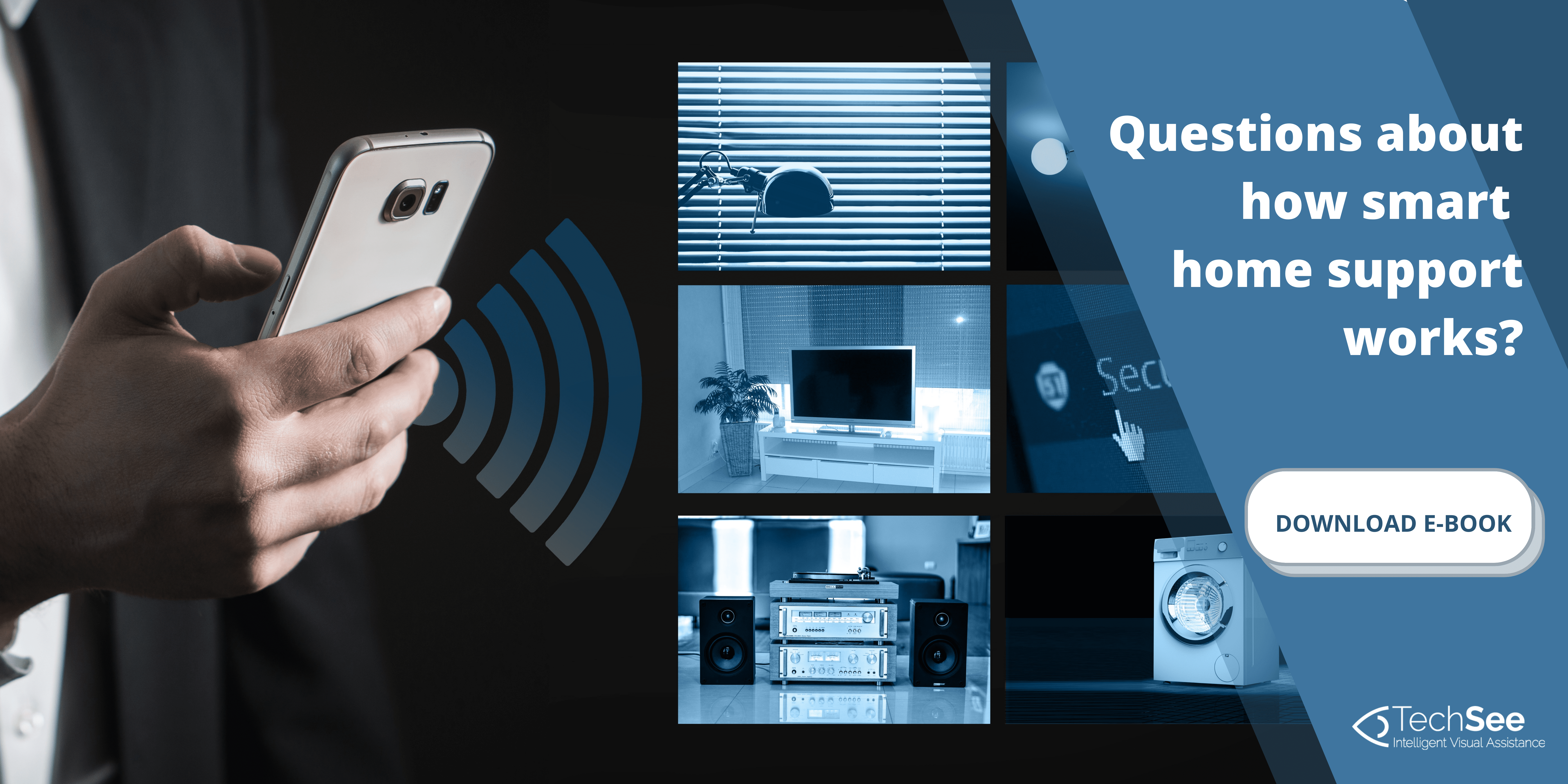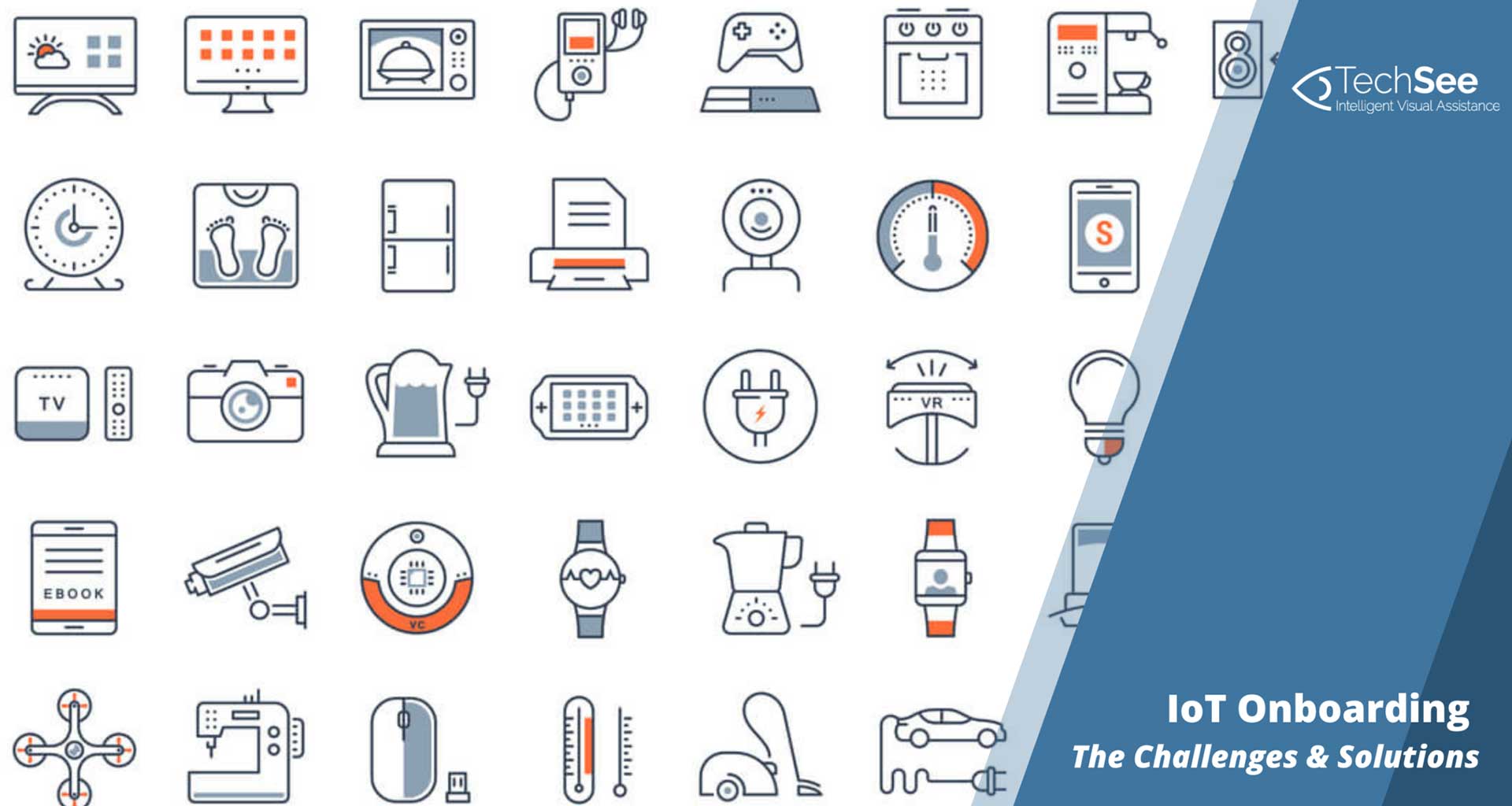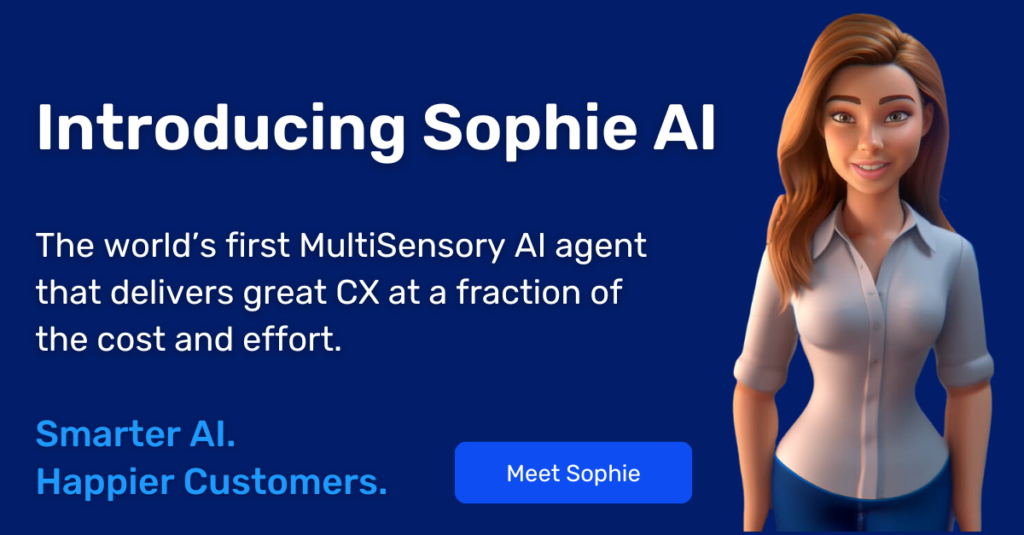Contents
Most of us love our smart devices, but the IoT device onboarding process can create difficulties for many consumers, as James discovers in the following story.
James wants to water his lawn. He picks up the hose, turns on the water, and a few minutes later… the job is done.
Then James installs a smart sprinkler system.
To water his lawn automatically, James needs to make sure his WiFi is enabled, his device is configured to his municipality’s water use guidelines, the programming is set properly to water on Monday, Wednesday and Friday from May through September, and the device is connected correctly to other information systems like The Weather Channel, so the sprinkler will not be activated if rain is forecast.
Wow. Maybe he should have stuck with the hose.
Before diving into the challenges and solutions for IoT devices onboarding, let’s define our terminology.
What Is Device Onboarding?
Device onboarding is the initial process of connecting a device to the internet platform for carrying out its intended services. Ideally, IoT device management onboarding should be a simple and seamless process for users.
The IoT Onboarding Challenge
As the above example illustrates, setting up a smart device is often complicated, and puts off many potential customers. Helping consumers who struggle with advanced technology creates a whole new challenge for businesses. Is there a solution that could solve this? Let’s first look into the IoT installation challenges that consumers and businesses are now facing.
IoT Setup Challenges Consumers
While in theory, smart devices should be easier to set up – most are wireless and can be remotely connected – in reality, the setup of smart devices can present significant challenges to the consumer. Successful IoT network onboarding depends on the consumer choosing the right location for the device, connecting it correctly to the current infrastructure and the internet, and configuring it properly to the associated app(s).
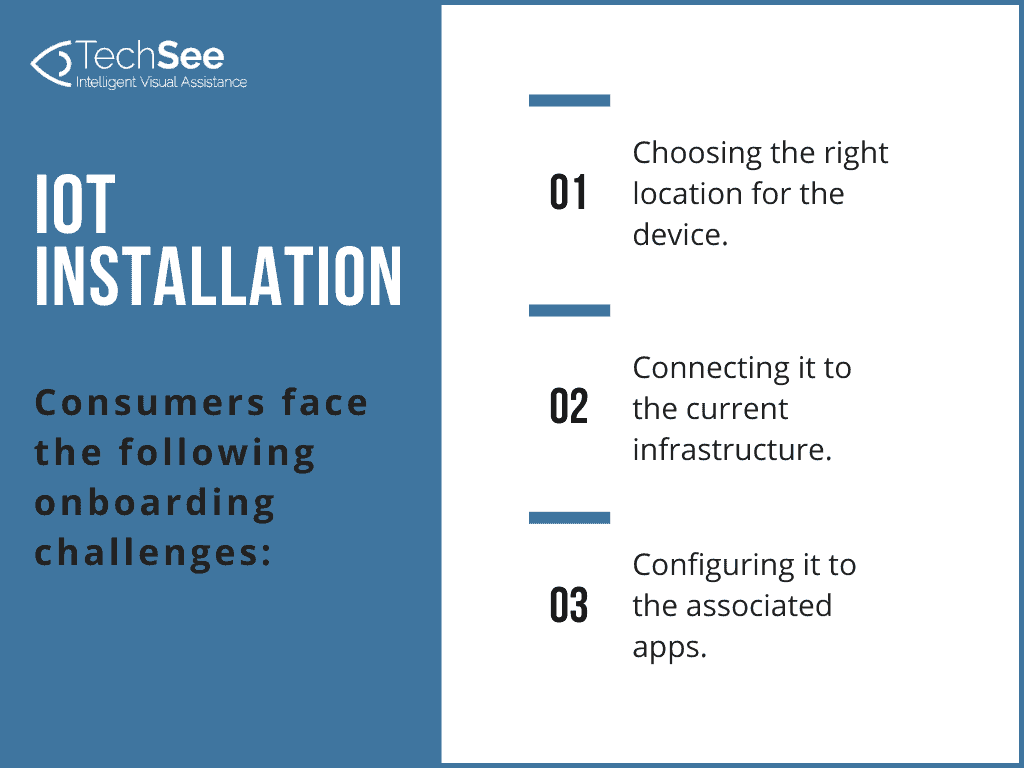
Early adopters of smart home products tended to be DIY-ers or highly technical and were able to self-onboard with ease. However, smart home device adoption has recently been slower than anticipated. In order to drive greater usage of smart devices by the mainstream population, the IoT device onboarding process must be simple, seamless, and highly personalized.
As the IoT matures, and the range and complexity of connected devices multiplies, there is a need for new approaches to support IoT device onboarding. According to a recent self-installation survey by TechSee, 76% of customers prefer self-installation for home electronic devices, and visual guidance has emerged as the solution of choice for the majority of customers.
IoT Setup Assistance: Challenges for Businesses
Companies have taken notice of consumer preference for self-service and are reevaluating current Support of Things (SoT) customer support models in light of this shift. More enterprises than ever recognize the potential ROI from significant savings on labor costs, reduced technician visits, lower call center volume, as well as the ability to scale SoT services.
After all, with the number of connected devices expected to reach 30.9 billion by 2025, and their relatively low cost and high profit margins, companies must find a way to meet their customers’ need for assistance with installation, activation and troubleshooting. Clearly, dispatching a technician at a cost of $150 to install a smart lamp that costs $30 is not feasible.
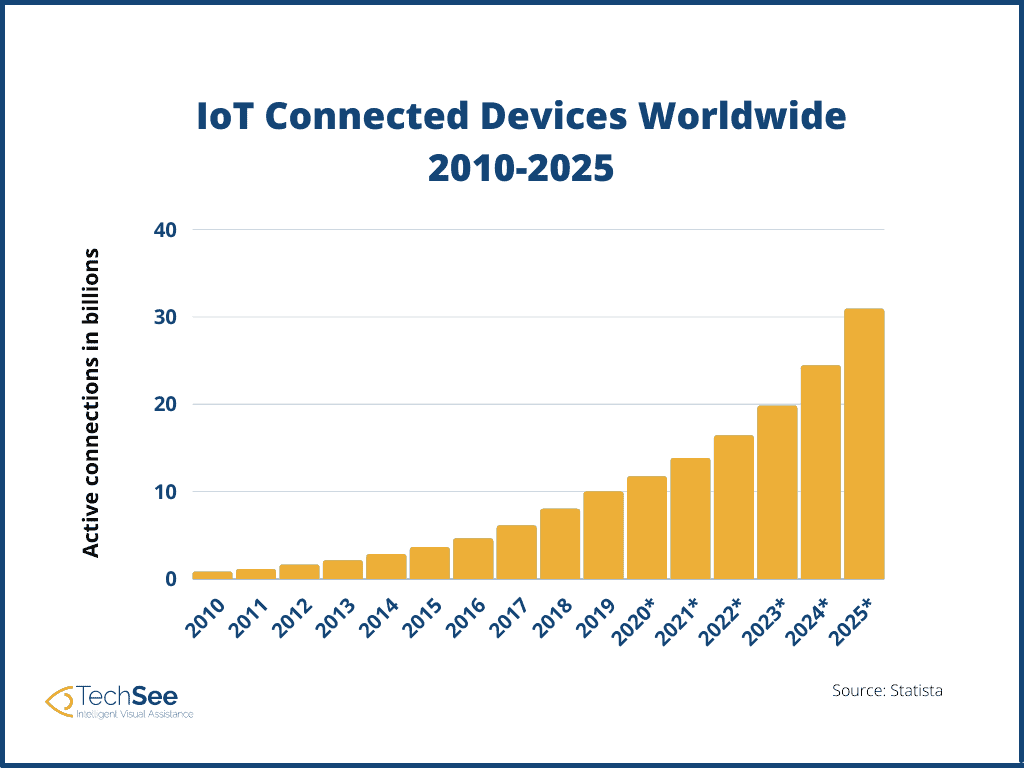
Enter AI-powered self-service solutions for smart home IoT onboarding.
IoT Onboarding Solutions
There are a number of solutions to the IoT challenges outlined above, including:
- Traditional self service resources such as unboxing videos
- Auto onboarding
- Virtual assistance
- Visual assistance
Each of these have advantages and disadvantages, as will be discussed below.
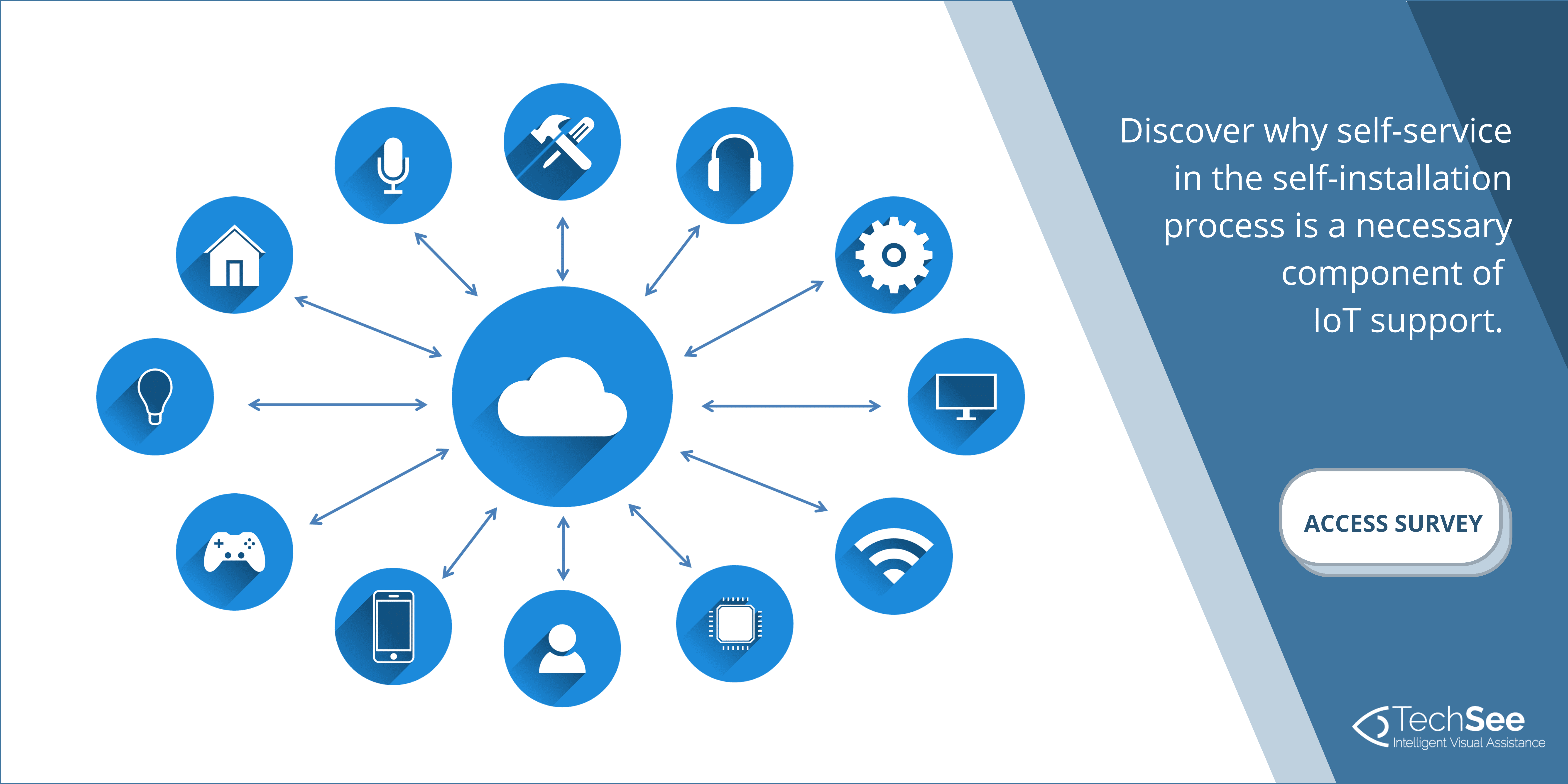
1. Downside to Traditional Self Service
Today, the most common method for onboarding smart home products is via the use of self service tools, and especially how-to videos. Although self service gives a sense of independence for customers to manage their own devices, this method can also lead to frustration when customers lack adequate support. Often, questions that are specific to the customer’s home or needs require more personalized guidance than a generic how-to video can offer.
2. Is Auto Onboarding a Good Enough Solution?
A relatively new solution, auto onboarding is executed when the customer scans a QR code and connects the device to the internet, enabling the automatic setup and IoT device activation of the product. For example, Intel’s Secure Device Onboard service uses a “zero touch” model that allows devices to dynamically discover the customer’s IoT platform account at power-on for automatic registration.
While secure device onboarding may be an ideal solution when it comes to software and connectivity aspects, auto onboarding does not deal with the physical dimension – cables, placement, and hardware configuration. A TechSee survey disclosed that consumers find these aspects to be the most challenging as the following responses show:
- cabling/wiring (28%)
- hardware configuration (16%)
- component identification (12%)
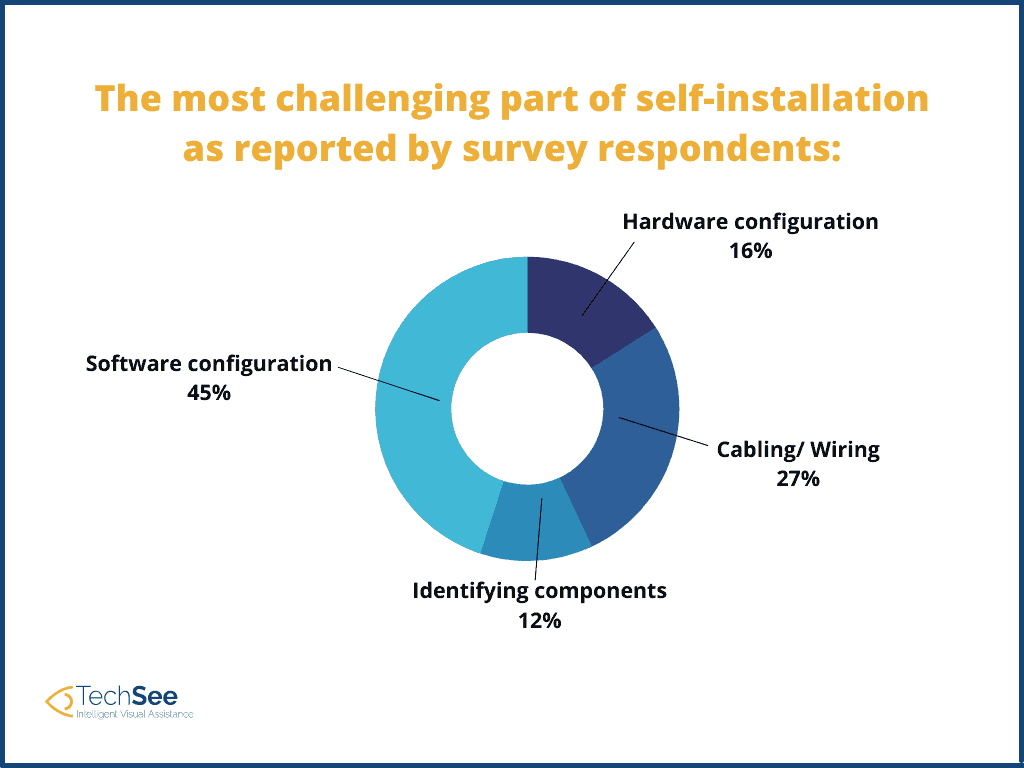
3. Virtual Assistants Can Automate and Scale Support
Conversational AI platforms – known as chatbots – automate and scale one-on-one conversations with customers, and are becoming increasingly sophisticated. As they grow smarter, IoT chatbots can be more helpful for diagnosing service problems or walking customers through activation steps, for example.
The popularity of voice assistants is also on the rise. As revealed by TechSee’s survey, a full third of consumers already prefer self-installation help via interactive conversational virtual assistance through tools such as Alexa, Siri, and chatbots. Alexa has already proven capable of controlling smart home cameras, entertainment platforms, lights, locks, and thermostats, among other devices.
Both tools are effective for interacting with consumers using the ability to process text or voice, and retrieving related information from a knowledge base. However, both of these assistants still lack the ability to provide feedback to the customer or correct him when something goes wrong, and sometimes fail to deliver user experiences that are seamless and effortless.
4. Visual Assistants – The Ultimate Solution
The innovative Augmented Reality Instruction Manual, which enables customers to view product instructions three-dimensionally using mobile AR technology, is now becoming smarter and even more intuitive thanks to intelligent visual assistants. These ‘bots with eyes’ are taking IoT device onboarding to the next level by bridging the gap between the physical and digital domains, effectively allowing the computer to see the customer’s environment.
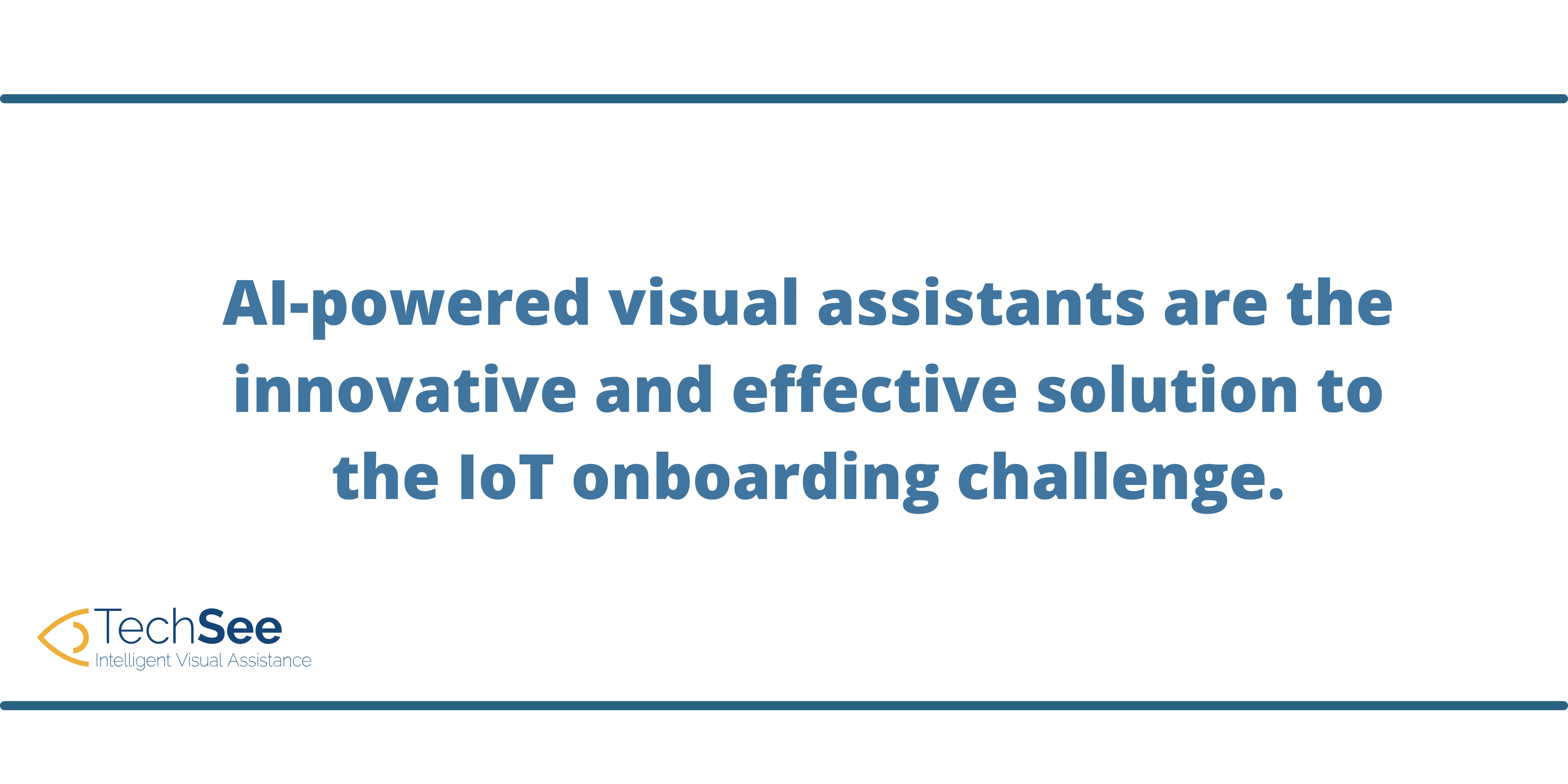
Using computer vision AI, visual assistants can process images of the customer’s home or workplace and understand the status of their IoT onboarding issue, whether it’s installation or troubleshooting. This capability allows visual assistants to fully interact with the customer, provide feedback and correct them when necessary.
For example, when unboxing a new smart security system, a visual bot assistant can recognize the cables and inputs, and guide the customer using AR, showing them which cable to put where. The bot can see the customer’s physical space, advise on the optimal locations to place the cameras, recognize LED lights on the cameras, and help the customer complete the installation.
|
IoT Onboarding Solutions |
Examples |
|
Traditional self service |
Unboxing videos |
|
Auto Onboarding |
|
|
Virtual Assistants |
Alexa, Apple’s Siri, Google Assistant |
|
Visual Assistance |
Simplifying the IoT Onboarding Process
To keep the smart home revolution rolling, IoT onboarding should be simple and seamless for the consumer, and cost-effective for the enterprise. The need for advanced AI-driven self-service onboarding solutions – such as traditional self-service, auto onboarding, virtual assistants and visual assistants – is self-evident and is expected to increase exponentially as more consumers bring a wider range of complex connected devices into their homes and daily lives.
